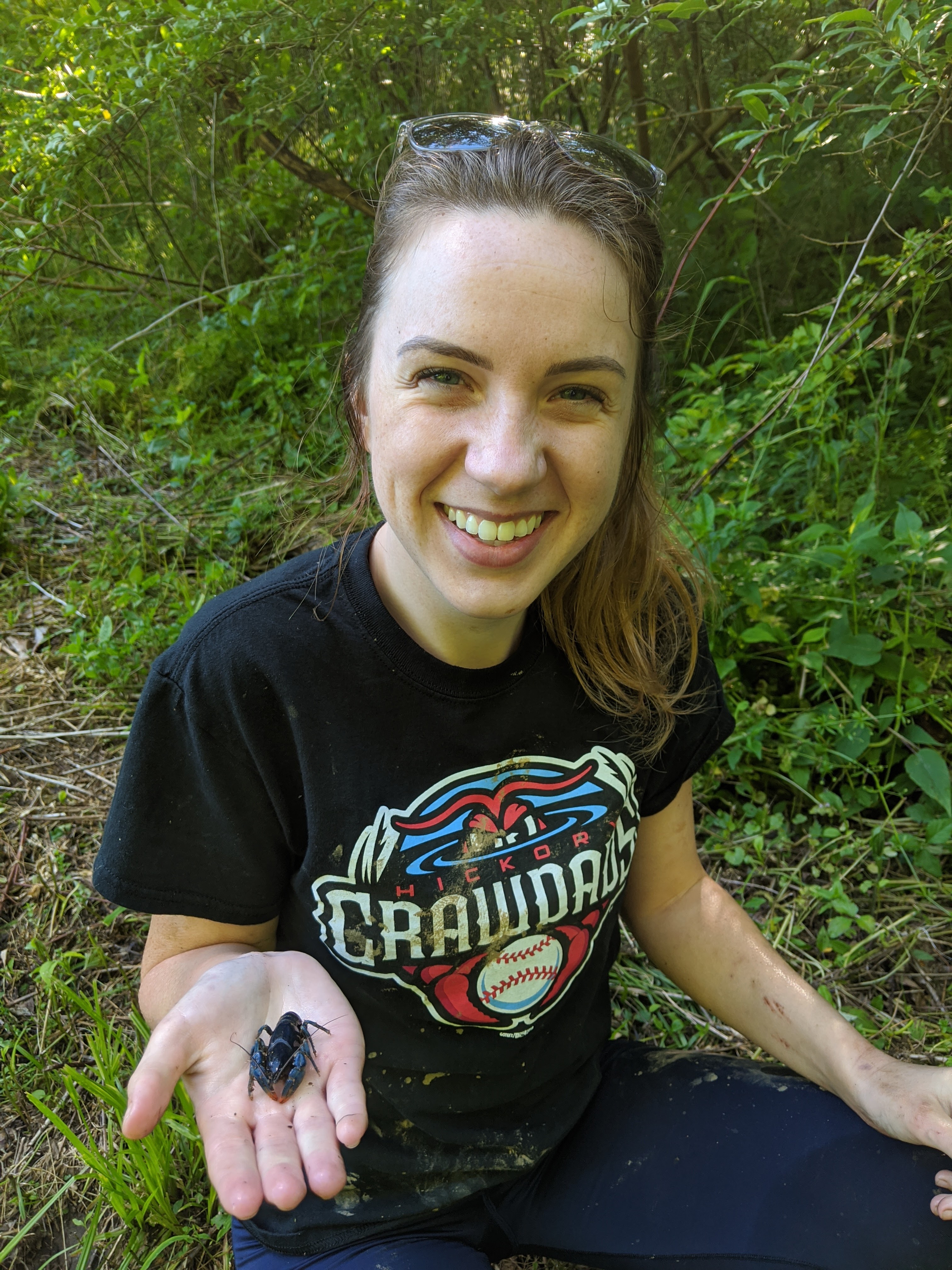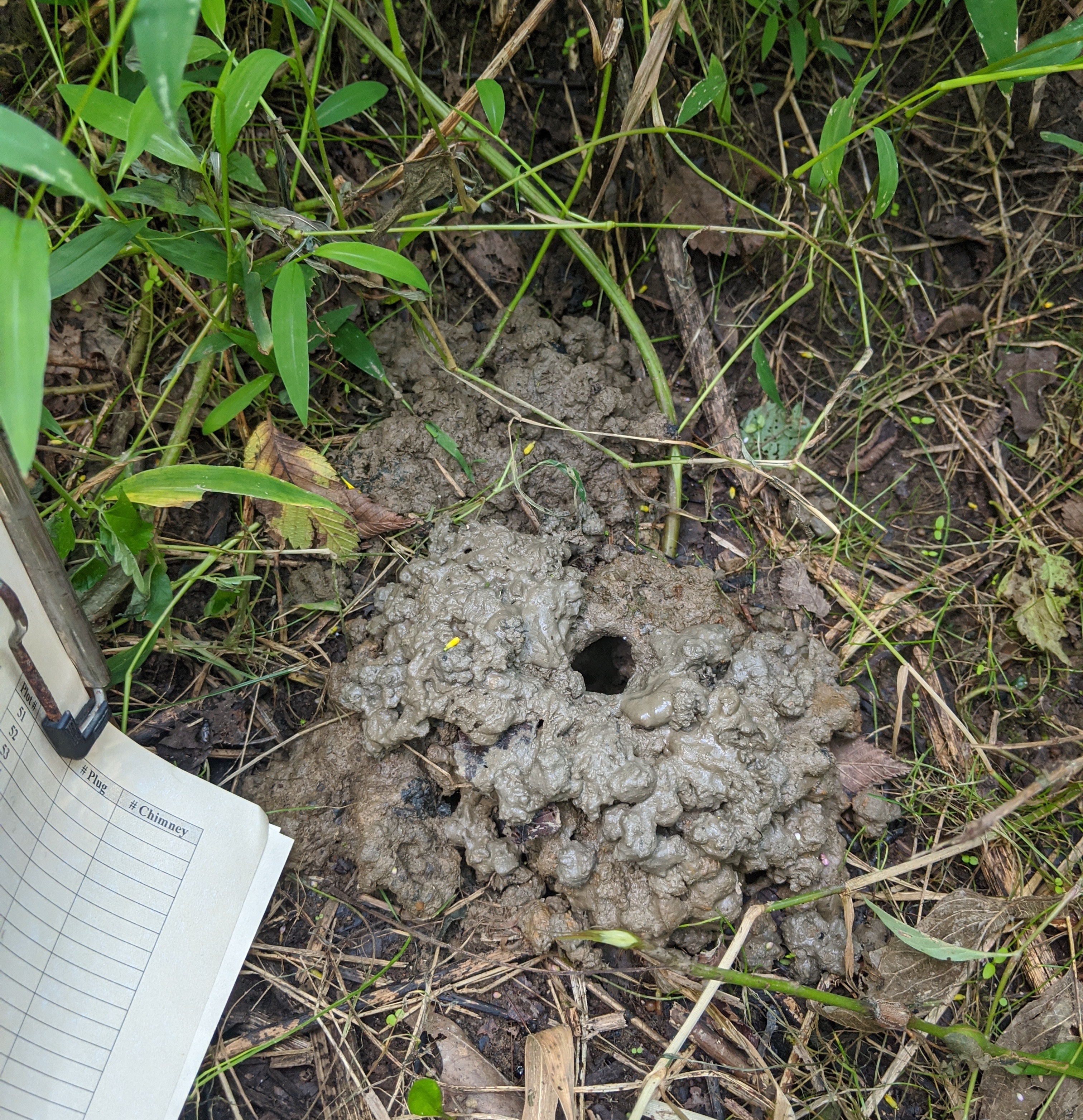Blog

#bioPGH Blog: Blue Crayfish
 A resource of Biophilia: Pittsburgh, #bioPGH is a weekly blog and social media series that aims to encourage both children and adults to reconnect with nature and enjoy what each of our distinctive seasons has to offer.
A resource of Biophilia: Pittsburgh, #bioPGH is a weekly blog and social media series that aims to encourage both children and adults to reconnect with nature and enjoy what each of our distinctive seasons has to offer.
Thank you to reader Courtney for suggesting this week’s topic!
What’s blue, has two pincers, and make little mud chimneys when it burrows? That would be our own blue crayfish (Cambarus monongalensis), an elusive but fascinating little decapod! Haven’t heard of a burrowing blue crayfish? That’s ok – most of us haven’t. The species doesn’t even have its own Wikipedia page, if that tells us anything! (As a heads’ up in case you go to check on that, the Everglades crayfish, Procambarus alleni, also sometimes called blue crayfish, does have a page; but the two species live in very different habitat types and have different life histories.)
So what do we know about the blue crayfish? I chatted with West Liberty University graduate student Destinee Davis, who is actively studying blue crayfish, to learn more about these invertebrates!

Graduate student Destinee Davis
“Burrowing crayfish are not like the crayfish you would catch while playing in the creek as a child,” says Davis. “They live in holes in the ground! These crayfish dig down into the ground using their chelae (claws) and use complex burrow networks to utilize groundwater and humidity to keep their gills moist (to breathe). They are not found in flowing water such as streams and spend the majority of their time in and around these burrows in wetlands and wet roadside ditches.”

Entrance to crayfish burrow
Davis’ research aims to understand more about these elusive arthropods. Because they are rare and rather difficult to find, the species has quite a few knowledge gaps that Davis and her advisor Dr. Zachary Loughman hope to fill.
“The focus of my research is to better understand the ecology and life history of the primary burrowing crayfish,” explains Davis. “I am doing this by monitoring various populations throughout the northern part of its range to see how it utilizes wetland/ seep habitats. I am also collecting specimens to document this species' life history such as reproductive cycles, molt states, and general natural history notes. Knowing this will help researchers make better conservation decisions in the future and better help understand these cryptic species.”
Davis also noted that even though we humans don’t know a great deal about this species, blue crayfish are still quite important!
“Although they do not live in streams, they are still very important to the environment and play a crucial role in the habitats they live in. For example, crayfish burrows have been shown to provide habitat for species such as Kirtland’s Snake (Clonophis kirtlandii), Eastern Massasauga Rattlesnake (Sistrurus catenatus), Hine’s Emerald Dragonfly (Somatochlora hineana), and the Gray Petaltail (Tachopteryx thoreyi).”
Thank you so much to Davis and the Laughman lab for their work! It’s a good inspiration for the rest of us to keep exploring our wild world – there is still plenty to learn.
Image credits: All photos courtesy of Destinee Davis.
Resources
Pennsylvania Natural Heritage Program Newsletter, July-September 2014

